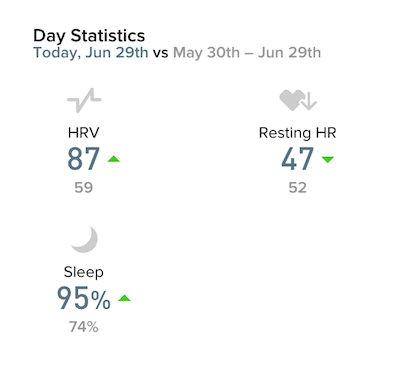
How software engineering principles helped me get more sleep.
We just wrapped our first ever engineering all hands at Litmus. It was an amazing opportunity for our mostly remote team to get together in person, reconnect and scratch some of our creative itches.
One of the important parts of the retreat was a series of lightening talks we did. The premise was simple: 5 minutes on any topic you want to present on.
My talk was titled MALTT: Measure All The Things.
The inspiration
If you were a Litmus customer in 2014 or prior you probably recall the experience was, in a word, delayed. To get a full compliment of results could take upwards of 5 minutes.
There were a lot of reasons for that. Some were super obvious like a delayed queuing system we had in place to ease pressure on the system during high usage periods. But even after ripping things like that out we couldn't get times on our servers anywhere near what they were locally.
So we started measuring.

Since then, you might say we've gone a little overboard. We measure everything - even apparently something that takes 0 milliseconds. I should probably look into that ¯_(ツ)_/¯.

The idea is simple - how can you improve what you can't measure. How can you know where the bottlenecks are? In the business and software worlds this is pretty tried and true. As Peter Drucker said - "You can't manage what you can't measure".
We measured and measured and measured again. Now a full compliment of Litmus results returns in just a few seconds.
What does this have to do with sleep?
I don't generally believe in things like New Year's resolutions. January 1 seems to be an awfully arbitrary time to make an improvement. But generally speaking I've been working on 2 personal goals recently: to get more sleep and to improve my overall fitness.
Having the experience of dramatically improving a software system through measurement and instrumentation I did a deep dive into how I could apply the same process to my personal goals.
Making the investment and getting the data
Being a pretty committed runner (2018 will be my 7th straight year completing at least 1 marathon), I was pretty familiar with most of the fitness technology that was out there. And if you love data like I do, there are a lot of choices.
After getting a reccomendation from a friend and doing some research on my own I invested in a Whoop. It's definitely not the low cost provider. But as a more serious athlete, for me, it felt worth it.
Now using my Whoop I track my sleep, recovery, heart rate and heart rate variability daily. By knowing these figures I can stay on track with my sleep and see how my excercise and other life choices affect my overall fitness.

Call to action
What are you looking to improve? It can be anything. Do you want to read more? Learn the piano? Approach it like you would a business or engineering problem. Find a key metric. Find a way to reliably measure it - even a paper journal can work. Get your baseline and get to work.
Check out the talk below:
Hello! I'm Brendan Caffrey. A software engineer and leader currently working as Engineering Director @ Litmus where I lead teams making awesome tools for email professionals.